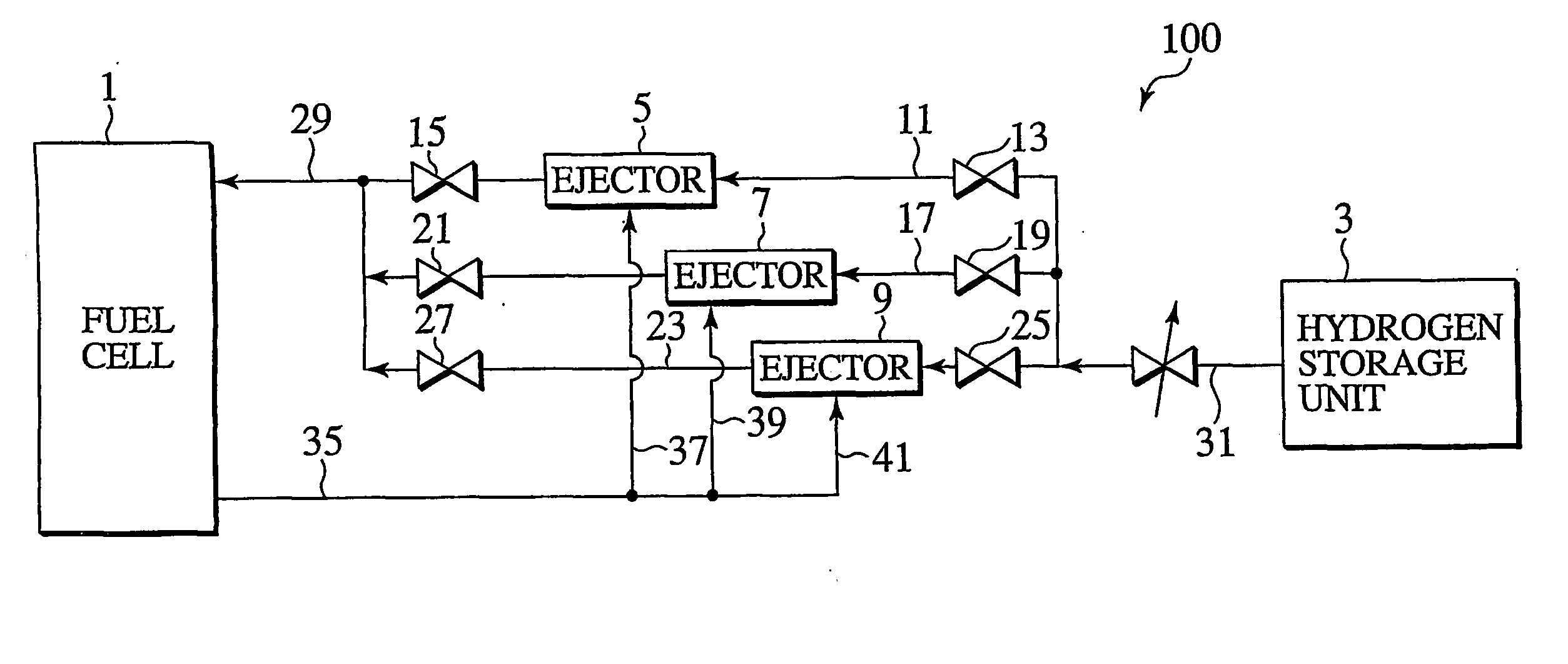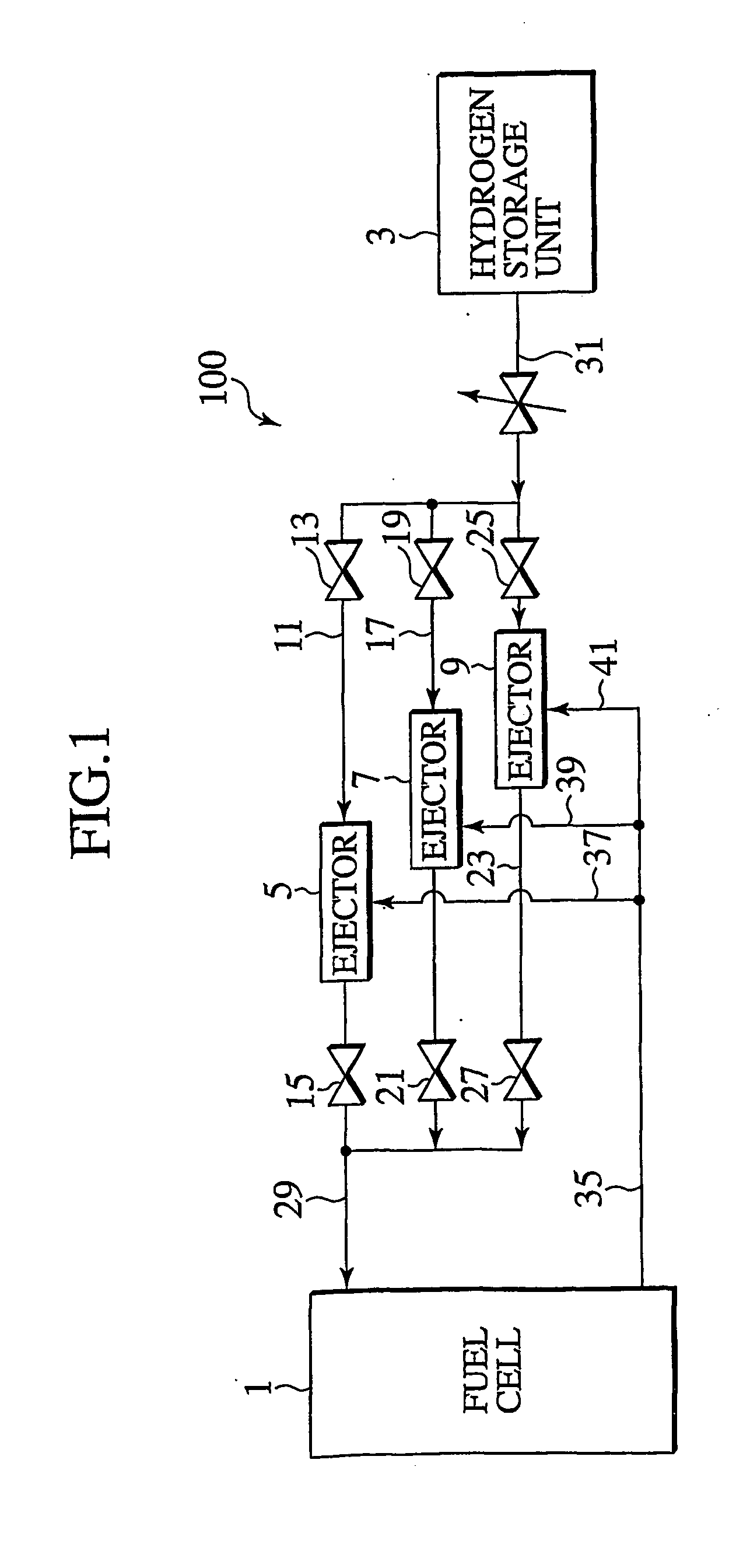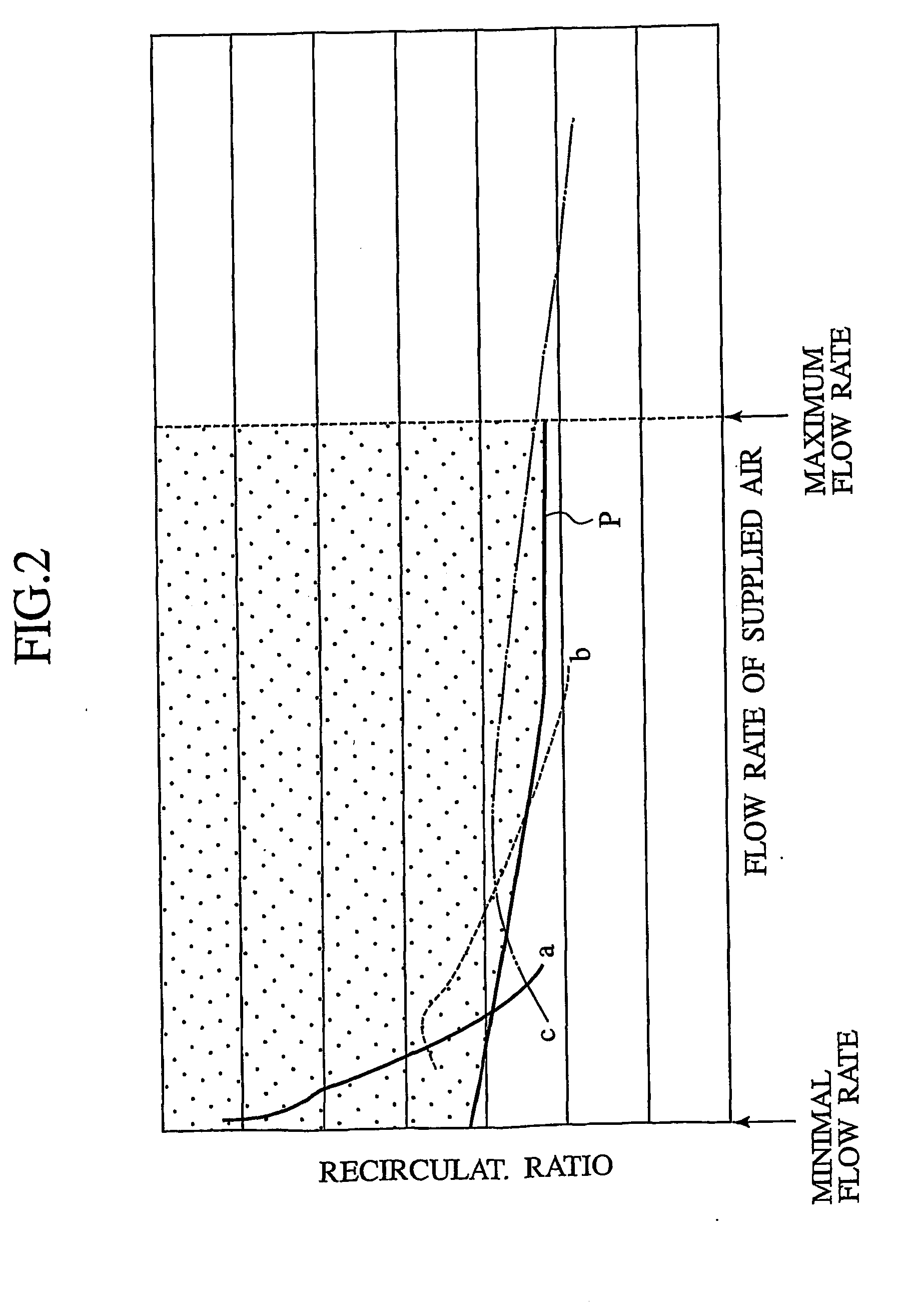Fuel cell system
a fuel cell and system technology, applied in the field of fuel cell systems, can solve problems such as complex structur
- Summary
- Abstract
- Description
- Claims
- Application Information
AI Technical Summary
Benefits of technology
Problems solved by technology
Method used
Image
Examples
first embodiment
[0021]FIG. 1 is an overall structural view of a fuel cell system of a first embodiment according to the present invention. The fuel cell system 100 is comprised of a fuel cell 1 and a hydrogen storage unit 3, serving as a hydrogen supply source, between which three ejectors 5, 7, 9 are connected in parallel to allow hydrogen in excess thereof, supplied to the fuel cell 1, to be recirculated to the fuel cell 1.
[0022] As shown in FIG. 2, the ejectors 5, 7, 9 are so configured as to have relationships, different from one another, in terms of a flow rate of air (with hydrogen being referred to in the presently filed embodiment) to be supplied and a recirculation ratio (ratio of a volume in terms of the flow rate to be supplied). Here, a solid line a corresponds to the ejector 5, a broken line b corresponds to the ejector 5 and a single dot line c corresponds to the ejector 5, with these ejectors being used in combination to obtain a widened range of the flow rate of air to be supplied (...
second embodiment
[0030]FIG. 3A is a cross sectional view of an ejector unit 50 equipped with three ejector sections for use in a fuel cell system of the present invention. The ejector unit 50 includes a housing 43 of a cubic structure formed with a valve body receiver cavity 45 in which a cylindrical valve body 47 is disposed for sliding movement along a vertically extending axis CL1 in the figure.
[0031] Formed in the housing 43 at left and right symmetric positions thereof in a substantially center area along a vertical direction are a hydrogen inlet port 49 and a hydrogen outlet port 51 which are open to the valve body receiver cavity 45. Hydrogen supplied from the hydrogen storage unit, that is not shown, enters the hydrogen inlet port 49 and is discharged from the hydrogen outlet port 51 to be supplied to the fuel cell that is not shown. Also, formed at a lower portion of the housing 43 is a hydrogen recirculation port 53 which communicates with the valve body receiver cavity 45. Excess hydrogen...
third embodiment
[0048]FIG. 5A is a cross sectional view of an ejector unit 50A equipped with three ejector sections for use in a fuel cell system of the present invention. FIG. 5B is a cross sectional view taken on line 5B-5B of FIG. 5A. This ejector unit includes a housing 85 formed in a substantially cubic configuration and having a valve body receiver cavity 87 in which a cylindrical valve body 89 is disposed for rotational movement about a center of a vertically extending axis CL2 in FIG. 5A.
[0049] Formed in the housing 85 at left and right symmetric positions thereof in a substantially central area along a vertical direction are a hydrogen inlet port 91 and a hydrogen outlet port 93 which are open to the valve body receiver cavity 87. Hydrogen supplied from the hydrogen storage unit, that is not shown, enters the hydrogen inlet port 91 and is discharged from the hydrogen outlet port 93 and supplied to the fuel cell that is not shown. Also, formed in the housing 85 at a lower portion thereof is...
PUM
| Property | Measurement | Unit |
|---|---|---|
| flow rate | aaaaa | aaaaa |
| structure | aaaaa | aaaaa |
| pressure | aaaaa | aaaaa |
Abstract
Description
Claims
Application Information
 Login to View More
Login to View More - R&D
- Intellectual Property
- Life Sciences
- Materials
- Tech Scout
- Unparalleled Data Quality
- Higher Quality Content
- 60% Fewer Hallucinations
Browse by: Latest US Patents, China's latest patents, Technical Efficacy Thesaurus, Application Domain, Technology Topic, Popular Technical Reports.
© 2025 PatSnap. All rights reserved.Legal|Privacy policy|Modern Slavery Act Transparency Statement|Sitemap|About US| Contact US: help@patsnap.com



